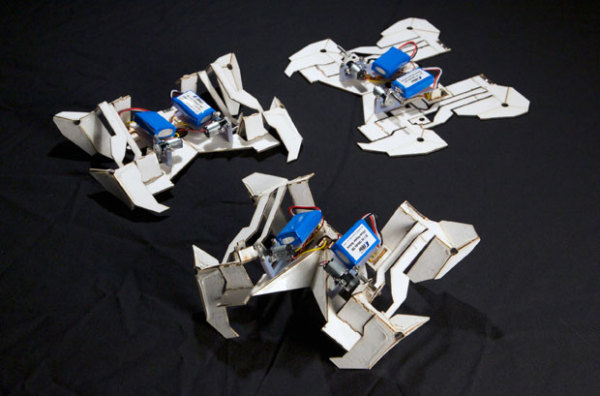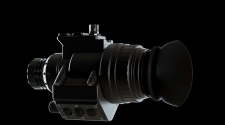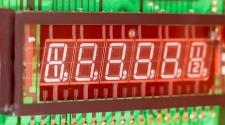It’s a genuine Transformer. A level lump of butterfly-formed plastic mysteriously overlays itself into the state of a four-legged robot – and after that, incredibly, strolls off utilizing its own particular force source.
Manufactured by a group headed by microrobotics engineers Sam Felton and Robert Wood at Harvard University in Massachusetts, the robot gets its essential level pack structure from the Japanese specialty of paper collapsing – origami.
By picking level shapes that will unfold into structures that create portable legs – a subset of the craftsmanship called inflexible origami – the group basically needed to work out how to get its changing machine to consequently unfold and creep.
Make your own particular Transformer
Initially, they picked an origami shape that can be effectively collapsed into a four-legged configuration – it looks butterfly-like. As opposed to utilizing paper, in any case, they took a sheet of shape memory plastic that progressions shape when warmed, and utilized a laser cutter to make an overlay of copper tracks that sit along all the vital origami creases in the plastic. They then altered two microcircuits – both including an engine and a battery unit – to either side of the machine.
To make the robot unfold, the copper tracks are warmed in a situated succession managed by a microcontroller after the batteries are associated, drawing the legs into shape, and afterward making the robot remained up. Once the robot is completely unfolded, the engines captivate with apparatuses – and the legs walk. With legitimate programming of the microcircuits, the robot can turn, as well.
The analysts trust that pursuit robots focused around the guideline could one day be embedded into little spaces – maybe dropped there by a floating automaton – unfold itself into a slithering structure, and afterward search out areas of survivors in the midst of, say, seismic tremor wreckage.
New pattern
Wood accepts the robot’s entire assembling methodology can one day be mechanized – making it really gathering toward oneself – with the expansion of printable circuits and batteries that other examination groups are chipping away at. “The basic steps needed to make the structure have been intended to be effortlessly robotized,” he says.
“I think what this Harvard group have done is incredible,” says Chris Melhuish, chief of the Bristol Robotics Laboratory in the UK. While the robot may sound a tad charming, he says there is a genuine building motivation to make robots that can self-compose without being advised how to do so by a machine. It’s a piece of another pattern called “morphological calculation”, he says.
“In case you’re smart, you can outline the material so that its shape is responsible for the robot’s relationship toward oneself as opposed to an entangled and extravagant machine. That is absolutely what they have done here – it is promising stuff.”
















